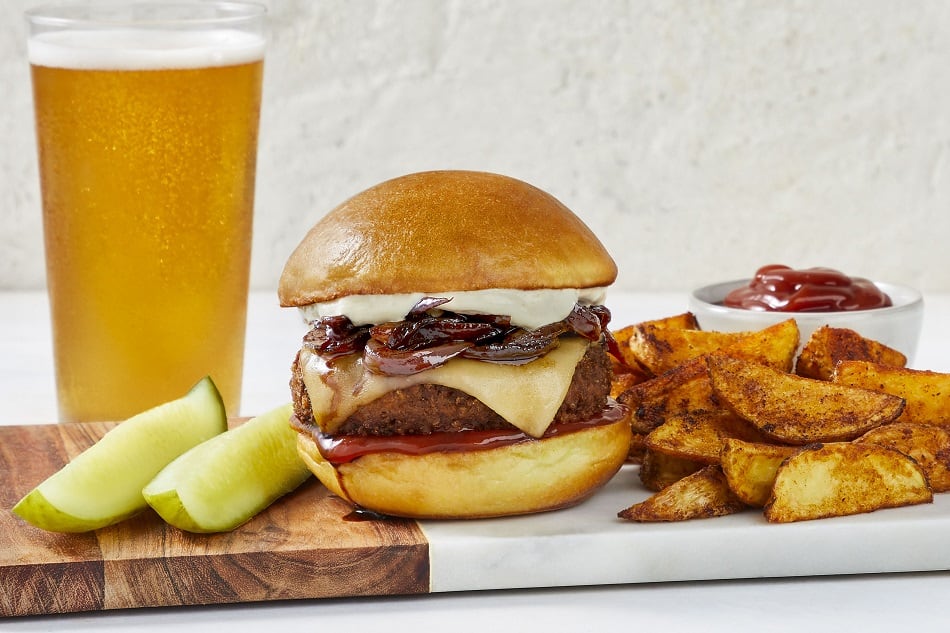In a release, Albertsons said: “Plated’s subscription service will be phased out at the end of November, giving way to a sharper focus on how the brand can help deliver a differentiated in-store experience. The company plans to expand the Plated brand with new product offerings in additional stores in 2020.
“Our vision for Plated includes an expanded set of products that goes far beyond a dinner-based solution and into a comprehensive in-house culinary brand,” said Geoff White, EVP and chief merchandising officer, who noted that heavy buyers of Plated meal kits tested in Safeway stores in Northern California were more likely to have families - and larger baskets - than the average shopper.
“With a broader scope of offerings, we see Plated solving customer demands around convenience, lifestyle, and cooking experience, while adding yet another layer of interest to our in-store journey.”
While the online subscription model – whereby meal kits are delivered directly to customers’ homes from Plated fulfilment centers – will be dropped, Plated products will be available for purchase online through stores’ existing e-commerce platforms, which offer delivery or pickup through the Drive Up & Go service, said Albertsons.
In its second quarter earnings release, the retailer explained that Plated was not delivering on initial expectations: "Due to continued underperformance of the Plated meal kit subscription and delivery operations, the company recognized an impairment loss of $38.6m to reduce the related asset group to its fair value...
"The impairment loss primarily relates to the Plated tradename, and to a lesser extent, certain other Plated intangible assets, leasehold interests and equipment."
Is the online subscription model viable for meal kits?
The strategic shift for Plated was announced shortly after meal kit brand Blue Apron posted another sharp decline in revenues and customer numbers in the third quarter but insisted that its strategy of focusing on 'high affinity' customers that spend more and stick with the service was working.

Speaking to analysts last month after posting a net loss of $26.m on revenues down 34% year-on-year to $99.5m in Q3, Blue Apron CEO Linda Findley Kozlowski said orders were down 35% in the quarter, while customer numbers have dropped significantly from over a million in Q1 2017 to just 386,000 in Q3 2019.
However, average order value rose to $57.60 (vs $56.79 in Q3 2018), while average revenue per customer was $258 (vs $233 in Q3 2018), and orders per customer were up 10% year-over-year, said Kozlowski.
"We continue to see year-over-year improvement in the metrics that we believe are key indicators of a strengthening customer base."
HelloFresh: 40% YoY growth in active customers in the US in Q3
Rival HelloFresh, in contrast, experienced a 40% year-on-year increase in active customers in the US in Q3, 2019.
In the firm's earnings call, CEO Dominik S. Richter noted that, "While we're still growing quite significantly in our core [HelloFresh] brand, given that we just ramped them up from scratch or from very low levels, EveryPlate and Green Chef [the other two brands the firm operates with in the US], have higher growth rates. And as we scale them up, they'vee now also reached quite meaningful volume."
Home Chef: Our e-commerce customers need to be willing to cook with us two to three times a week
Home Chef, a meal kit brand acquired by Kroger for $200m in May 2018, still offers an online-based subscription service, but has been steadily expanding its retail offer in Kroger stores to target consumers that buy into the meal kit concept but don’t want to commit to a subscription, or don’t want to plan meals so far ahead, chief revenue officer Rich DeNardis told FoodNavigator-USA in a recent interview.

"The biggest thing we hear [when Home Chef asks subscribers why they quit] is the same as with any service. It’s expense and lifestyle reasons. Our e-commerce customers need to be willing to cook with us two to three times a week and that doesn’t always fit with people’s lifestyles.”
Instore, he said, "The shopper we resonate with is less price sensitive, but also a highly valuable shopper to Kroger generally.”
Asked about the shrink challenge with in-store meal kits, which are high-ticket items with a relatively short shelf-life (around P+7) - not a winning combination if you don’t manage to keep tight control of demand planning – he said:
“We’ve spent a lot of time with Kroger trying to minimize the time the product spends in transit through things like cross-docking, and leveraging some of their fresh kitchen deliveries that go to stores on a daily basis, so once it arrives in store it has as much shelf-life as possible.”




